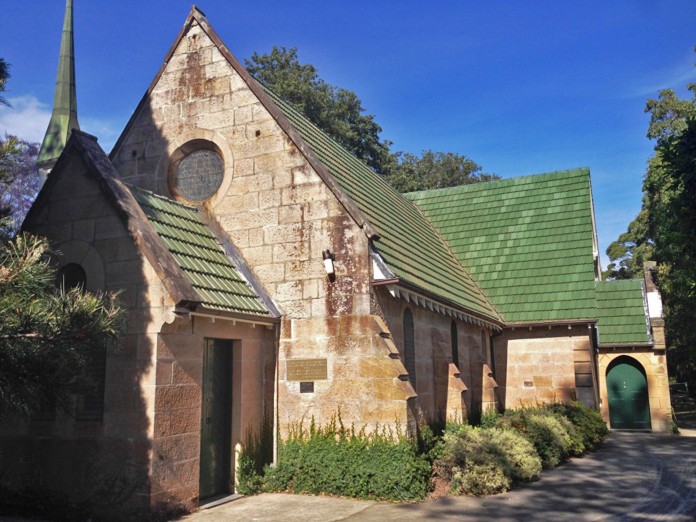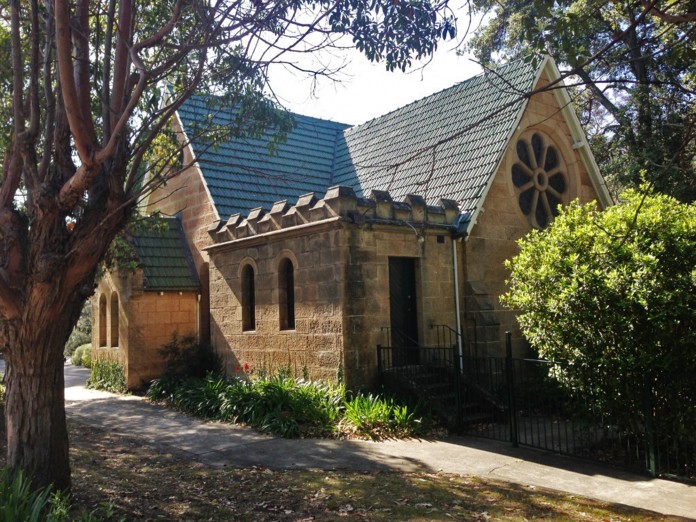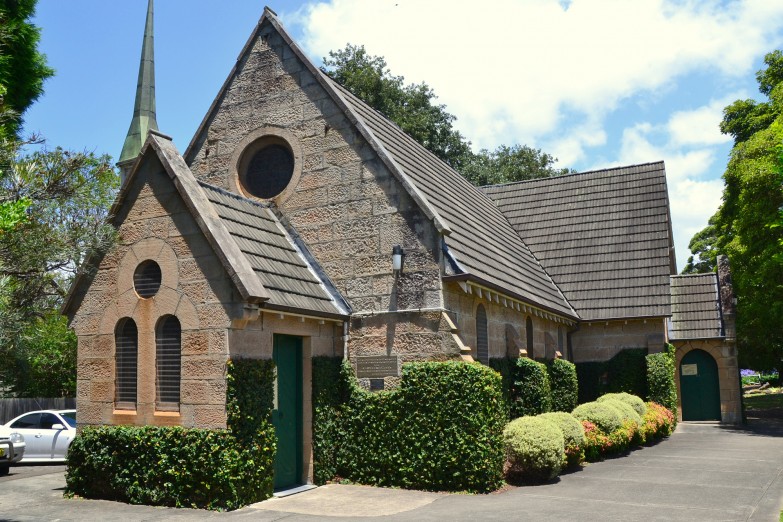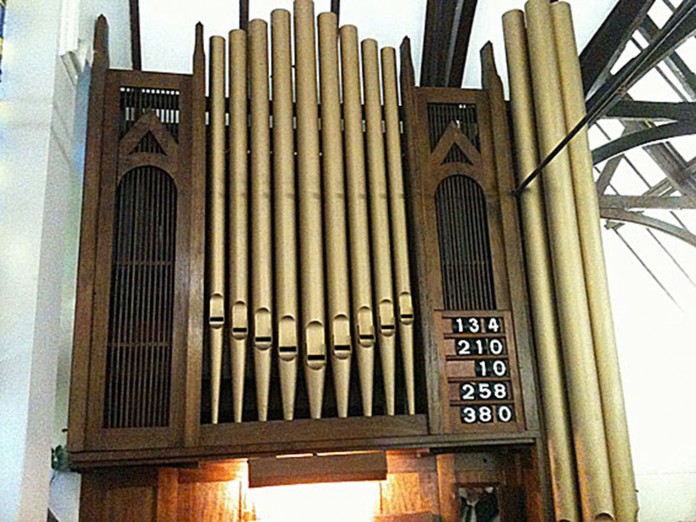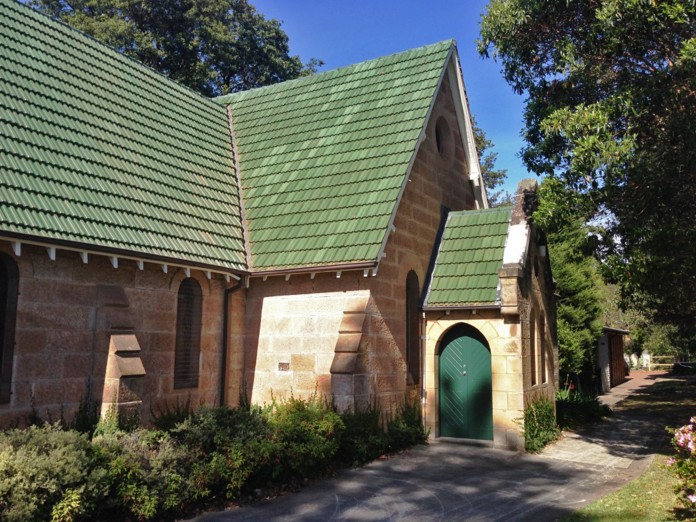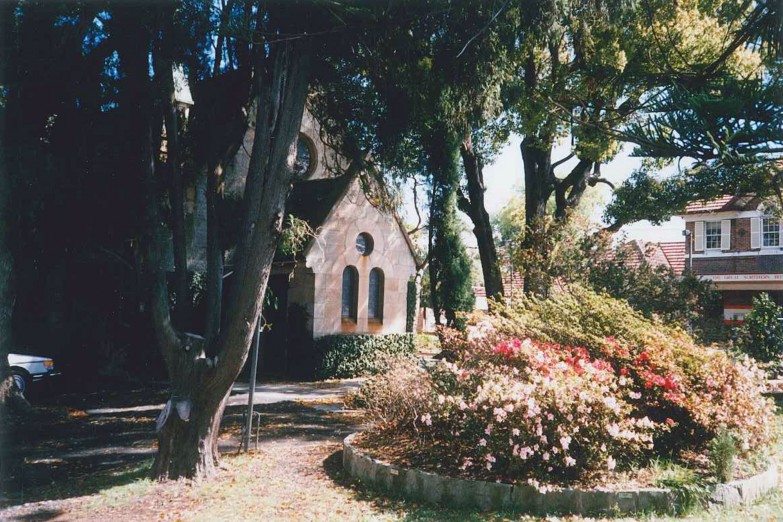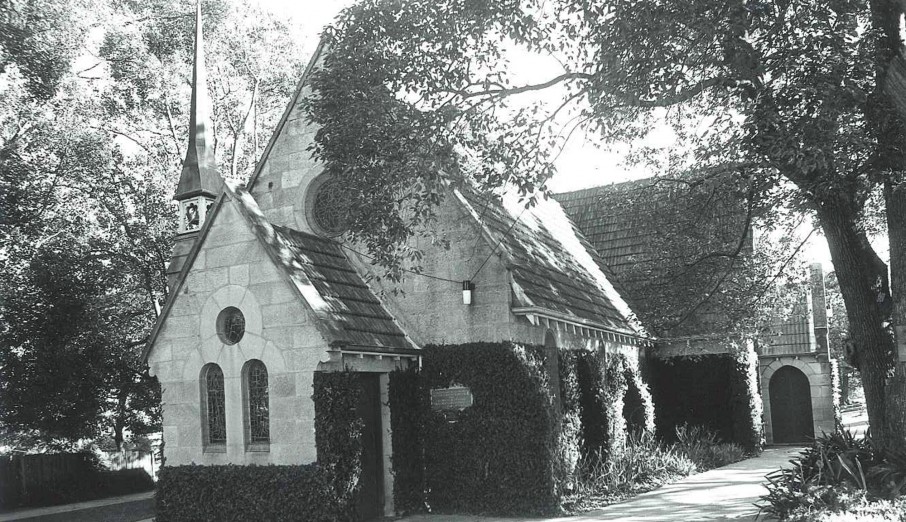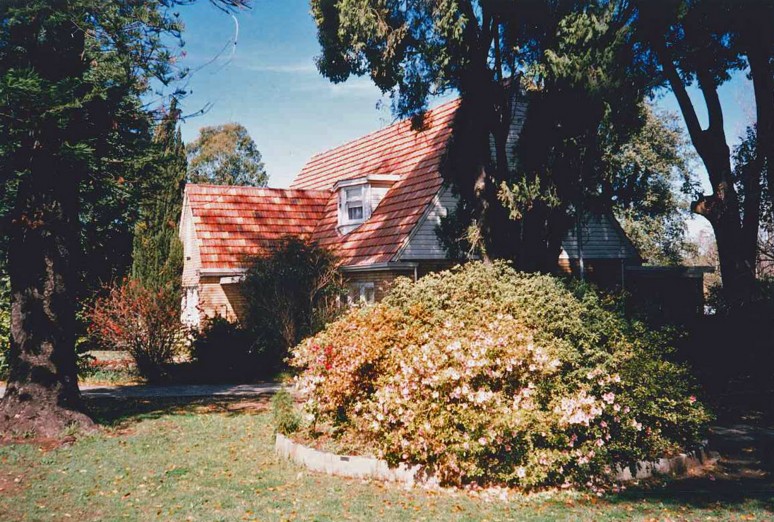The remaining Crown land in this area was auctioned in the 1850s, marketed as an area for fruit growing and farming.
The land on which the church sits was originally owned by James Mitchell, after whom the Mitchell Library in Sydney is named. Upon his death the land passed to his son, David Scott Mitchell, a medical doctor. In 1871, two acres of this land was then purchased from David Mitchell by the trustees of the Wesleyan church, William Henry McKeown and others.
In 1843, Wesleyan Methodist local preachers visited Lane Cove (then all North Shore) and formed a class of 12 people. In 1870 Methodist services were held in the Bryson home, opposite the present day church. In 1871 the local Methodists settled purchase of the church’s land (opposite), although the sandstone church had been recently built at this time.
The church was the third Methodist church to be built on the north shore. It is the earliest remaining. The architect is likely to have been Thomas Rowe, although it is much simpler than many other of his designs for this period. It had a timber shingle roof and cedar lining. Mr Morrow drew the plans for the building which was to be a stone structure. Stone was cut and carted to the site and timbers were hauled from the upper North Shore. The builders were Bryson, Leet, Johnson and Montgomery, who were all members of the congregation. James Montgomery was the stonemason for the church. On July 1st 1871, Mr John Dawson, a prominent business man attached to the York Street Methodist Church, laid the Foundation Stone and the church was opened on 31 December 1871.
The Christian Advocate of August 1, 1871 noted that:
“The church when finished will be a very neat and substantial structure. The site it occupies is on the Lane Cove Road, close to the junction of the North Sydney road, and is about four miles from the township of St Leonards.
The building is being constructed of stone and will be roofed with pointed shingles. The roof will be lined with cedar. Ample provision has been made for light and ventilation. The church is being built on a portion of ground of two acres extent. Part of this land is intended for a cemetery. Mt Thomas Rowe is the architect and Mr Jago of North Sydney the contractor for the stonework.”
Another ceremony was held on October 7, 1883 when the transept and porch were added which meant that the space had more than doubled to a cruciform plan. In 1891 the name of the church changed from Willoughby to Chatswood.
The Sunday School was built and opened in 1906. A tennis club was formed after courts were built in the south-western corner of the grounds in 1912. A second tennis court was paved in bitumen for use as a car park – year unknown. A kindergarten hall was built in 1912, but burnt down in the 1960s and was rebuilt in 1967. The primary hall was built in 1913.
In 1930 the sanctuary, two vestries and a porch were added. In 1935 a new organ was installed and in 1937 the parsonage was built, designed by the architect Hedley Carr.
In 1966 a bronze bell was installed in the tower. The fellowship centre was constructed in 1968 in honey-coloured brick.
In 1977, the entire Methodist Church agreed to join the newly created Uniting Church of Australia and after 106 years as a Methodist Church, this church became the Chatswood South Uniting Church. On 4 July 1971 Sir Roden Cutler, Govenor of NSW and his wife unveiled a plaque here on the Centenary celebrations of the Chatswood South Uniting Church.
The cemetery was owned and maintained by the parish from its consecration in 1871 until it was handed over to Lane Cove Council in the early 1980s. It was listed on the Register of the National Trust of Australia (NSW) in 1976 along with the gardens. In 1984 the cemetery was rededicated a Pioneers’ Memorial Reserve.

